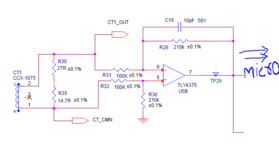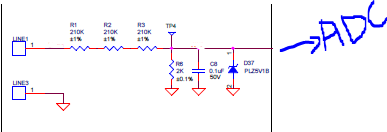zuirgham
Junior Member level 3
The power supply is from a generator (Three phase, delta configuration), as per requirement, need to measure active, reactive, apparent power. There is no need of Phase reversal as per customer. So i'm keeping that discussion aside. The previous version of board has a CT for current measurement for all three (L1, L2, L3), then passing through Diff amp and reading it directly inside controller. For voltage measurement, I'm dividing the voltage through resistor divider, and then passing through ADC(ADS7142), and reading in controller. FYI, Line 3 is used as a reference.
The next version of board has to calculate active, reactive, apparent power. To calculate all of that, need to calculate phase angle and then compute power factor. Couple of ideas i got while reading on web, one was to use a zero-crossing detector after voltage divider, and CT, and calculate Phase angle. Also, one of the papers suggested to go with Phase locked loops to determine phase angle. My questions are
1. Which approach is convenient, are there any circuits i can make use of ?
2. If zero crossing detector is used, where to put the detector?
3. I'm considering only two phases (L1, L2) as input, Will this be sufficient to calculate phase angle.
Guidance please on how to proceed for power factor computation.
The next version of board has to calculate active, reactive, apparent power. To calculate all of that, need to calculate phase angle and then compute power factor. Couple of ideas i got while reading on web, one was to use a zero-crossing detector after voltage divider, and CT, and calculate Phase angle. Also, one of the papers suggested to go with Phase locked loops to determine phase angle. My questions are
1. Which approach is convenient, are there any circuits i can make use of ?
2. If zero crossing detector is used, where to put the detector?
3. I'm considering only two phases (L1, L2) as input, Will this be sufficient to calculate phase angle.
Guidance please on how to proceed for power factor computation.

